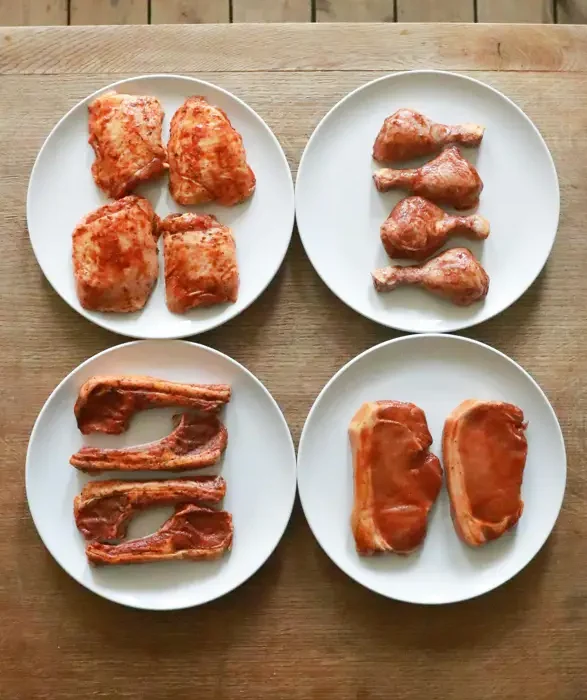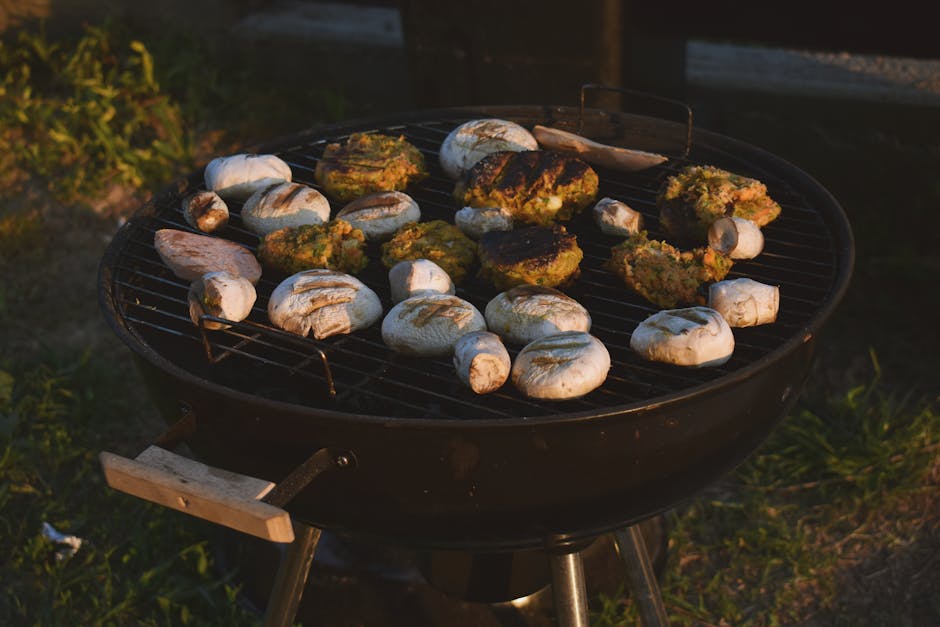The sizzle of a perfectly seared steak, the aroma of smoky char, the tender bite of juicy meat – few culinary experiences are as universally satisfying as a well-grilled steak. Its origins are ancient, stretching back to the earliest humans who discovered the transformative power of fire on raw meat. While pinpointing the precise moment when grilling was invented is impossible, evidence suggests that early forms of grilling existed tens of thousands of years ago. Early humans likely used primitive methods, perhaps placing meat directly onto hot coals or embers, a technique that remains surprisingly similar to many grilling methods today.
Over centuries, grilling evolved alongside human civilization. Different cultures developed their unique techniques and preferences. In South America, the asado tradition, a communal feast centered around grilled meats, is deeply ingrained in the cultural fabric of many countries. Similarly, in the United States, grilling has become a quintessential summer pastime, often associated with backyard barbecues and family gatherings. The global popularity of steak is undeniable; the global beef market was valued at over $200 billion in 2022, highlighting the enormous demand for this prized cut of meat. This statistic underscores the cultural significance of steak, not just as a food, but as a symbol of celebration, community, and culinary mastery.
The cultural impact of the grilled steak extends beyond mere consumption. It features prominently in literature, film, and art, often symbolizing prosperity, masculinity, or a celebratory occasion. Think of the iconic steak dinners in countless Western films, or the celebratory steak cooked to perfection in family gatherings across the globe. The different cuts of steak, from the tenderloin to the ribeye, each carry their own cultural connotations and preferences, reflecting regional variations in taste and tradition. Understanding these nuances, from the history of grilling to the cultural significance of the steak itself, enhances the entire experience of preparing and enjoying this culinary masterpiece. This guide will explore the techniques needed to achieve perfectly grilled steak, leading you towards a culinary experience both satisfying and deeply meaningful.
Ingredients and Measurements
The success of a perfectly grilled steak hinges not only on technique but also on the quality of your ingredients and their precise measurements. Using the right cuts and paying attention to seasoning is key to achieving that delicious, juicy result.
For this recipe, we’ll be using a 1.5-inch thick ribeye steak, weighing approximately 12-14 ounces. You can adapt the recipe for other cuts like New York strip or filet mignon, adjusting cooking times accordingly. Thicker cuts require longer grilling times to achieve the desired doneness.
Salt is your best friend when it comes to seasoning steak. We’ll be using a generous amount of kosher salt, approximately 1 ½ teaspoons per side. Kosher salt is preferred because its larger crystals allow for even distribution and prevent over-salting. Fine table salt should be used more sparingly, about half the amount. Season your steak at least 40 minutes before grilling, or even better, several hours in advance. This allows the salt to penetrate the meat, resulting in a more flavorful and tender steak.
Freshly ground black pepper is another crucial element. Use about ½ teaspoon per side. Avoid pre-ground pepper, as it loses its aroma and flavor over time. The freshly ground pepper will add a delightful burst of spice to your steak.
While salt and pepper are the foundation, you can enhance the flavor profile with additional seasonings. Consider adding ½ teaspoon of garlic powder and ¼ teaspoon of onion powder to each side. These subtle additions complement the beef’s natural flavor without overpowering it. Avoid heavily relying on pre-made steak seasoning blends, as they can often contain unnecessary fillers and overpowering flavors that mask the taste of the steak itself.
For a richer flavor, you can also incorporate herbs. Fresh rosemary or thyme, finely chopped, can be added to the seasoning mix. Use about 1 teaspoon of fresh herbs per side. Avoid using too much, as it can overpower the taste of the beef.
Finally, don’t forget the finishing touch: high-quality olive oil. A light drizzle of olive oil (about 1 tablespoon) before grilling helps to create a nice sear and prevents the steak from sticking to the grill grates. This step is optional but highly recommended.
Important Note: Adjust ingredient quantities based on the size and number of steaks you are preparing. Always ensure your ingredients are fresh and of high quality for the best results. Remember, less is often more when it comes to seasoning – let the natural flavor of the steak shine through!
Preparation of the Steak
The key to a perfectly grilled steak begins long before it even hits the grill. Proper preparation ensures even cooking, a beautiful sear, and ultimately, a more flavorful and tender result. We’ll focus on a 1.5-inch thick ribeye steak weighing approximately 12 ounces for this guide, but the principles apply to other cuts and thicknesses.
Choosing Your Steak: Select a steak with good marbling – this intramuscular fat renders during cooking, contributing significantly to flavor and tenderness. Look for a bright red color with even fat distribution throughout the meat. Avoid steaks with excessive surface bruising or discoloration.
Patting Dry: Once you’ve selected your steak, remove it from its packaging and pat it completely dry with paper towels. This is crucial for a good sear. Moisture on the surface of the steak will create steam instead of a sear, resulting in a less flavorful and less appealing crust.
Seasoning: Generously season your steak with kosher salt and freshly ground black pepper. Aim for about 1 teaspoon of kosher salt and ½ teaspoon of black pepper per side. Don’t be shy with the salt! It’s essential for flavor development and helps create a good crust. You can also add other seasonings at this stage, such as garlic powder, onion powder, or your favorite steak spice blend. However, keep it simple to allow the natural beef flavor to shine through. Press the seasonings gently into the steak to ensure they adhere properly.
Resting: After seasoning, let the steak rest at room temperature for at least 30 minutes, and up to 1 hour. This allows the steak to come to a more even temperature, resulting in more consistent cooking and a more tender final product. This step is often overlooked but is incredibly important for achieving perfect results. A steak that’s too cold will cook unevenly, leading to a tough, overcooked exterior and a cold, rare interior.
Optional: Adding Flavor (Advanced): For an extra layer of flavor, you can consider a simple oiling step. Lightly brush the steak with high-smoke-point oil, such as canola or grapeseed oil, just before grilling. This helps the seasoning adhere even better and contributes to a crispier sear. Avoid using olive oil, as its lower smoke point can lead to burning and an unpleasant taste.
Preparing Your Grill: While your steak rests, prepare your grill. Ensure it’s clean and preheated to high heat (around 450-500°F). A hot grill is essential for achieving that perfect sear. You should be able to hold your hand about 4 inches above the grates for only 2-3 seconds before needing to pull it away due to the heat.
With your steak properly prepared, you’re now ready to move on to the grilling process. Remember, patience and attention to detail during these preparation steps will greatly enhance the quality of your final grilled steak.
Preparing the Grill
Proper grill preparation is paramount to achieving perfectly grilled steak. A clean and properly heated grill is essential for consistent searing and even cooking. Begin by thoroughly cleaning your grill grates. Use a stiff wire brush to remove any remnants of previous cooking, including grease and charred food particles. A clean grill prevents unwanted flavors from transferring to your steak and ensures even heat distribution.
Next, consider your grill type. Gas grills offer precise temperature control, while charcoal grills provide a smoky flavor. For gas grills, preheat to high heat (around 500-550°F or 260-288°C). Allow the grill to heat for at least 15-20 minutes to ensure consistent temperature across the cooking surface. You should be able to hold your hand about 6 inches above the grates for only 2-3 seconds before the heat becomes unbearable; this indicates optimal temperature.
For charcoal grills, you’ll need to create a good bed of coals. Use approximately 6-8 briquettes per steak, depending on the size and thickness. Arrange the coals evenly, creating a hot zone and a slightly cooler zone. A good rule of thumb is to have a 2-inch layer of coals spread across your grill. Light the coals using a chimney starter for even ignition and avoid using lighter fluid, which can impart an unpleasant taste to your meat. Allow the coals to burn until they are covered in a layer of white ash, indicating they’ve reached the optimal temperature for searing (around 450-500°F or 232-260°C).
Regardless of your grill type, oiling the grates is crucial. Use high-heat oil with a high smoke point, such as canola or grapeseed oil. Apply the oil using a paper towel or a clean grill brush. This prevents the steak from sticking and promotes beautiful grill marks. Don’t use olive oil, as its low smoke point will lead to burning and a bitter taste.
Before placing your seasoned steak on the grill, ensure the grates are clean and well-oiled. If you notice any particularly hot spots, adjust the burner settings on a gas grill or rearrange the coals on a charcoal grill for even cooking. Once your grill is prepared and the steaks are ready, you’ll be well on your way to achieving perfectly seared and flavorful results. Remember to always practice safe grilling techniques and never leave your grill unattended.
Finally, consider using a grill thermometer to monitor the temperature accurately, especially for gas grills. A reliable thermometer will ensure your steaks are cooked to your desired doneness. Checking the temperature frequently, especially during the initial searing phase, is essential for optimal results.
Grilling the Steak
Now that your steak is perfectly seasoned and ready, it’s time to tackle the grilling process. The key to a great grilled steak is achieving a beautiful sear while maintaining a juicy, tender interior. This requires careful attention to temperature and timing.
Prepare your grill: Preheat your grill to high heat (around 500°F/260°C). For gas grills, ensure all burners are lit and evenly distribute the heat. For charcoal grills, aim for a bed of hot coals with a slightly cooler zone nearby for indirect cooking, if needed. A clean grill grates are crucial for preventing sticking and imparting unwanted flavors. Clean your grates thoroughly using a grill brush before you begin.
Oil the grates: Lightly oil your grill grates with a high-smoke-point oil, such as canola or grapeseed oil. This prevents sticking and helps promote even browning. Use tongs or a folded paper towel to apply a thin layer of oil to the hot grates, being careful not to burn yourself.
Sear the steak: Once the grill is hot, carefully place the steak on the grates. Avoid overcrowding the grill; leave ample space between steaks for even cooking. Let the steak sear undisturbed for 3-4 minutes per side to develop a nice crust. This initial sear locks in the juices and creates that delicious char.
Adjust the heat (if necessary): Depending on the thickness of your steak and your desired level of doneness, you may need to adjust the heat. For thicker cuts (e.g., 1.5 inches or more), you might want to reduce the heat to medium-high after the initial sear to ensure even cooking throughout. For thinner cuts, you may be able to maintain high heat for the entire cooking process.
Monitor the internal temperature: The best way to ensure your steak is cooked to your preferred doneness is to use a meat thermometer. Insert the thermometer into the thickest part of the steak, avoiding the bone if applicable. Here’s a general guide for internal temperatures:
- Rare: 125°F (52°C)
- Medium-Rare: 130-135°F (54-57°C)
- Medium: 140-145°F (60-63°C)
- Medium-Well: 150-155°F (66-68°C)
- Well-Done: 160°F (71°C) or higher
Rest the steak: Once the steak reaches your desired internal temperature, remove it from the grill and let it rest on a cutting board or wire rack for at least 5-10 minutes before slicing. This allows the juices to redistribute throughout the meat, resulting in a more tender and flavorful steak. Loosely tent the steak with foil to keep it warm during resting.
Slice and serve: After resting, slice the steak against the grain (perpendicular to the muscle fibers) for optimal tenderness. Serve immediately and enjoy your perfectly grilled steak!
Checking for Doneness
Achieving the perfect level of doneness in your grilled steak is crucial for a truly satisfying culinary experience. There are several methods to ensure your steak is cooked precisely to your liking, each with its own advantages and disadvantages. Never rely on solely one method; use a combination for the most accurate results.
The Touch Test: This is a quick and easy method, but requires practice to master. Using your index finger and thumb, gently press the steak’s thickest part. Compare the feel to the following guide:
- Rare: Feels very soft, almost jelly-like.
- Medium-Rare: Feels slightly more firm, with a slight give.
- Medium: Feels springy and firm, with only minimal give.
- Medium-Well: Feels quite firm, with very little give.
- Well-Done: Feels very firm and hard, almost unyielding.
Important Note: The touch test is highly subjective and depends on the thickness and cut of the steak. It’s best used as a supplementary method, not the sole determinant of doneness.
The Thermometer Method: This is the most accurate and reliable method. Use an instant-read meat thermometer inserted into the thickest part of the steak, avoiding the bone or fat. Do not leave the thermometer in the steak while it cooks as this can affect the final temperature.
- Rare: 125-130°F (52-54°C)
- Medium-Rare: 130-135°F (54-57°C)
- Medium: 135-140°F (57-60°C)
- Medium-Well: 140-150°F (60-66°C)
- Well-Done: 150°F (66°C) and above
Remember, the steak will continue to cook slightly after it’s removed from the heat (carryover cooking). Consider this when using the thermometer method. For example, if you want a medium-rare steak (130-135°F), you might aim for 125-130°F when you remove it from the grill to account for carryover cooking. The amount of carryover cooking varies depending on the steak’s thickness and the ambient temperature.
Visual Inspection: While less precise than temperature, observing the steak’s color can offer clues. Rare steak will have a deep red center, medium-rare will have a pinkish-red center, and medium will have a light pink center. Well-done steak will be completely brown throughout. However, this method is unreliable on its own and should only be used in conjunction with other methods.
Resting the Steak: After grilling, allow the steak to rest for at least 5-10 minutes before slicing. This allows the juices to redistribute throughout the steak, resulting in a more tender and flavorful final product. Resting is crucial, regardless of the doneness level. Tent the steak loosely with foil to keep it warm during resting.
By combining the touch test, thermometer method, and visual inspection, and always remembering to rest your steak, you’ll be well on your way to grilling perfectly cooked steaks every time.
Resting the Steak: The Crucial Final Step
Resting your steak after grilling is arguably just as important as the grilling process itself. Many home cooks rush this step, eager to dig into their perfectly seared masterpiece, but neglecting this crucial stage significantly impacts the final product. Proper resting allows the steak to retain its juices and achieve optimal tenderness.
Why is resting so important? During the cooking process, the steak’s muscle fibers contract, trapping juices within. When you cut into a hot steak immediately, these juices escape, resulting in a dry, tough, and less flavorful piece of meat. Resting allows the muscle fibers to relax, reabsorbing those precious juices. This leads to a more tender, juicy, and evenly cooked steak.
How long should you rest your steak? The resting time depends on the thickness of your steak. As a general rule, rest your steak for at least 5 minutes per inch of thickness. For example, a 1-inch thick ribeye should rest for at least 5 minutes, while a 1.5-inch thick New York strip should rest for at least 7-8 minutes. For thicker cuts, such as a 2-inch thick steak, allow at least 10-12 minutes of resting time.
The best way to rest your steak: The ideal method involves transferring the cooked steak to a wire rack placed over a baking sheet. This allows air to circulate around the steak, preventing it from steaming and becoming soggy. Alternatively, you can rest it on a clean cutting board, but ensure it’s not directly on a cold surface which can rapidly cool the steak and hinder the reabsorption of juices. Avoid covering the steak with foil tightly, as this can trap steam and make the surface soggy.
What to do while your steak rests: Use this time wisely! Prepare your sides, set the table, and pour your drinks. The waiting is part of the process, and it allows the steak to reach its peak flavor and texture. Resist the urge to cut into it prematurely! The longer you wait within the recommended time frame, the more juicy and tender your steak will be.
Temperature considerations: While resting, the steak will continue to cook slightly due to residual heat. This is perfectly normal and helps to evenly distribute the temperature throughout the meat. Do not worry about the steak becoming overcooked during this period, provided you followed the recommended cooking times accurately.
Serving: Once the resting period is complete, use a sharp knife to slice the steak against the grain. This further tenderizes the meat and makes it easier to chew. Serve immediately and enjoy the fruits of your labor – a perfectly cooked, juicy, and flavorful steak.
Professional Tip: For extra juicy results, consider tenting the rested steak loosely with foil during the last few minutes of resting. This will help retain some of the surface moisture while preventing over-steaming.
Recommendations for Perfectly Grilled Steak
To achieve the perfect grilled steak, remember that preparation is key. Start with high-quality meat, ideally a well-marbled cut like ribeye, New York strip, or filet mignon. Allow the steak to come to room temperature for at least 30 minutes before grilling; this ensures even cooking. Pat the steak dry with paper towels to remove excess moisture, which helps achieve a good sear. Generously season the steak with salt and freshly ground black pepper at least 30 minutes before grilling, or even up to several hours in advance. This allows the seasoning to penetrate the meat, resulting in a more flavorful steak.
Control your grill temperature. For a good sear and even cooking, aim for medium-high heat (around 400-450°F). Use a meat thermometer to ensure the steak reaches your desired doneness. Remember that the internal temperature will continue to rise slightly after you remove the steak from the grill (carryover cooking). For medium-rare, aim for 130-135°F; medium, 140-145°F; and medium-well, 150-155°F. Don’t overcrowd the grill; give each steak enough space to cook evenly and achieve a beautiful sear.
Rest your steak! Once cooked, let the steak rest for at least 5-10 minutes before slicing. This allows the juices to redistribute throughout the meat, resulting in a more tender and flavorful steak. Resting is crucial for preventing a dry, tough outcome. Tent the steak loosely with foil to keep it warm during resting.
Serving Suggestions: Grilled steak is incredibly versatile. Serve it simply with a pat of butter, or elevate it with a flavorful sauce such as chimichurri, béarnaise, or a red wine reduction. Consider adding a side of grilled asparagus, roasted vegetables, or a fresh salad for a well-balanced meal.
Complementary Dishes: The richness of grilled steak pairs beautifully with many sides. Creamy mashed potatoes, garlic buttered noodles, or a vibrant potato salad provide a delicious contrast in texture and flavor. A simple green salad with a light vinaigrette adds freshness and balance to the meal.
Storage: Leftover steak should be stored in an airtight container in the refrigerator for up to 3-4 days. To prevent drying, wrap the steak tightly in plastic wrap or place it in a resealable bag, pressing out as much air as possible. You can also freeze leftover steak for up to 3 months. To freeze, wrap the steak tightly in plastic wrap, then place it in a freezer-safe bag or container.
Nutritional Information (per 3-ounce serving of grilled ribeye steak): The exact nutritional content varies depending on the cut and marbling of the steak. However, a general approximation is: Calories: Approximately 200-250; Protein: 25-30 grams; Fat: 15-20 grams; Cholesterol: 70-90 mg. Nutritional values may vary significantly depending on the cooking method and added ingredients. This is an estimate, and it’s recommended to consult a nutrition calculator or database for more precise values based on your specific steak and serving size.
Important Note: Always handle raw meat with care to avoid cross-contamination. Wash your hands thoroughly before and after handling the steak and use separate cutting boards and utensils for raw meat and cooked food.





